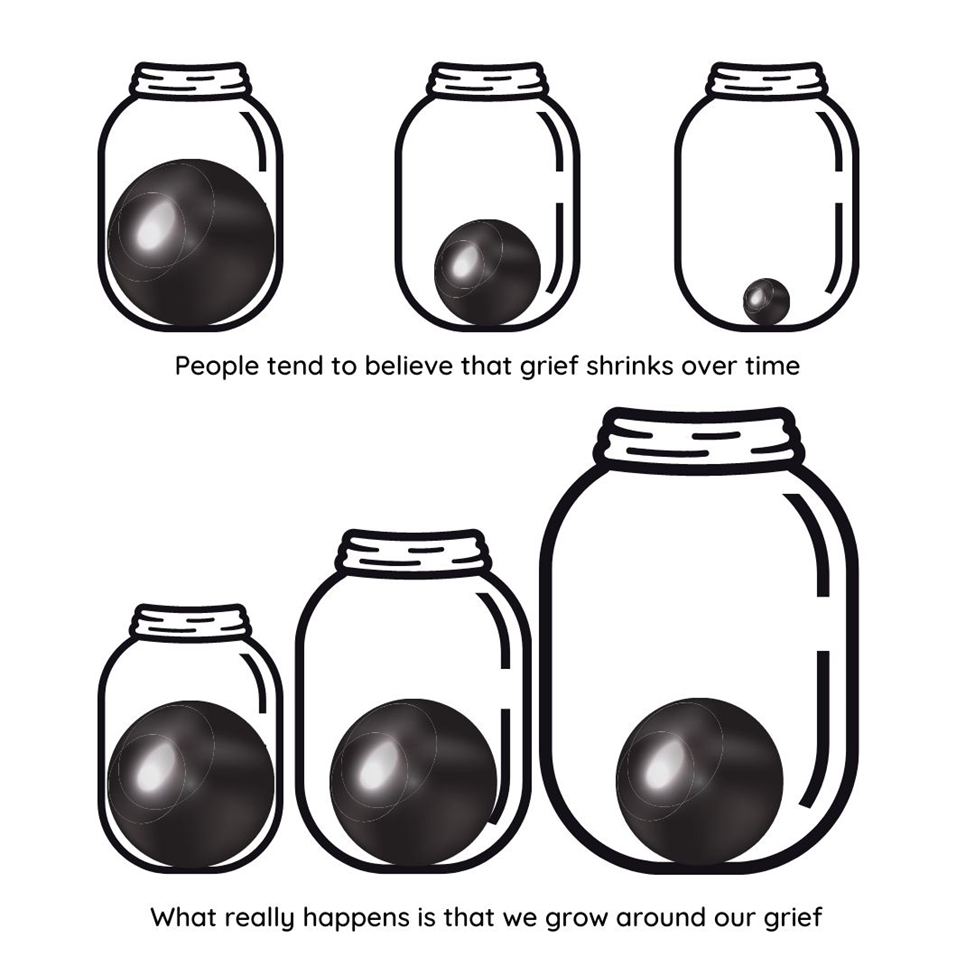Grief: A Human Experience
To grieve is to endure pain and loss. To grieve is to suffer. To grieve is to have loved. Ultimately, to grieve is to be human. Helen Keller once said, “We bereaved are not alone. We belong to the largest company in all the world – the company of those who have known suffering.”
We will all experience grief – the children we never birthed, the death of a dream, the life that never materialized, the relationship that ended, the job we lost, or a trauma endured. Grief is much more than the death of a loved one (bereavement). It is a powerful emotion connected to loss, the loss of anything to which there was an emotional attachment. It is messy and it is complicated; but, grief is also natural, completely normal, and an expected response to pain and loss.

Types of Grief
In processing grief, the tendency is to focus on bereavement, the death of loved one; but, there are several types of grief one may experience:
1) Conventional grief – the grief that occurs after death or loss and is marked by a healthy acceptance of that loss.
2) Anticipatory grief – the grief that occurs before death or a life-changing loss such as loved one dying from a terminal illness, a pending divorce, or an expected job layoff. Many feel angry, guilty, or lose hope in this place of in between. The loss has not yet occurred but is soon to come and will bring suffering upon its arrival. However, anticipatory grief also provides time to spend with loved ones and prepare for the loss.
3) Preparatory grief – the grief that occurs when one is preparing for their own death.
4) Delayed grief – grief that isn’t experienced immediately after the loss but arrives later. The individual copes well initially but then finds it harder to manage in the months and years following the loss. Parents may experience delayed grief when they choose to “be strong” and suppress their grief to focus on caring for their children.
5) Inhibited grief – grief that occurs when the one who is grieving chooses to avoid dealing with the loss and instead fills the void with a other things and people to distract them from their pain. Although the emotional response is suppressed, this type of grief can lead to physical manifestations like headaches, nausea, fatigue, and body aches.
6) Disenfranchised grief – the grief that occurs when the loss is perceived as stigmatizing or socially unacceptable like someone dying by suicide, from HIV/AIDS, or driving while intoxicated, grief at the end of an extramarital affair, or when a loved one is diagnosed with a mental disorder like schizophrenia or traumatic brain injury.
7) Traumatic grief – the grief that occurs when someone dies traumatically and often suddenly including car accidents, suicide, murder, or a medical emergency. Survivors and witnesses of such trauma can also experience traumatic grief. Healing from traumatic grief often requires therapy to process the trauma, regulate emotions/decrease symptoms, improve coping skills, and navigate the complicated intersection of trauma and grief.
8) Complicated grief or prolonged grief disorder – the grief that occurs when the bereaved experiences severe symptoms such as intense longing and emotional pain, preoccupation with thoughts or memories of the deceased, wanting to join the deceased in death, emotional numbness, a sense of disbelief that the loved one has died, disruption in identity, loss of purpose and meaning, debilitating loneliness, and problems reintegrating. These symptoms exceed social, cultural, and spiritual norms.
Irrespective of the type of grief, they share many common symptoms:

Although clinically distinct, grief and depression, also known as Major Depressive Disorder (MDD), share symptoms including sadness, irritability, changes in sleep and appetite, amotivation, and fatigue. The bereaved have a clear trigger for their emotional upheaval (loss), may feel guilty about certain aspects of the loss, have difficulty accepting the loss, and may experience a desire to be reunited with their loved one. However, self-esteem often remains intact and there is a desire to be around others instead of isolation and withdrawal. For those with MDD, there is not always an identifiable trigger for the onset of depressive symptoms, guilt is more generalized, there are feelings of worthlessness and hopelessness, a tendency to socially isolate, and thoughts of suicide. Therapy, known as grief counseling, is the primary treatment for individuals finding it difficult to manage their grief and loss. Medications are rarely used in the treatment of grief unless prescribed briefly to treat insomnia or severe anxiety. However, both therapy and medications are commonly used to treat depression.
Healing from Grief
Many are familiar with the Five Stages of Grief model proposed by Elisabeth Kübler-Ross:

Everyone who grieves doesn’t necessarily move through each stage nor linearly. I would offer two additional theories to consider as we learn to heal from grief. In his book Grief Counseling and Grief Therapy, Dr. J. William Worden discusses the concept of the four tasks of mourning to move through grief in a healthy way.

Dr. Lois Tonkin wrote about growing around grief. She posits that grief never leaves nor does it shrink. Rather we grow with and around it, our very existence intertwined with it, as life goes on.

This image was borrowed from The Ralph Site at growing-around-grief-the-ralph-site.jpg (1080×1080) (whatsyourgrief.com)
Sorrow is inevitable, a painful element of the human condition that cannot be avoided. But joy does come in the morning when we learn to heal and grow around our grief instead of ignoring or hiding it.
“So, it’s true, when all is said and done, grief is the price we pay for love.”
– E.A. Bucchianeri



This is wonderful! As a doula this even equipped me with a better way to process and aid in processing grief! In my own it also helped!!